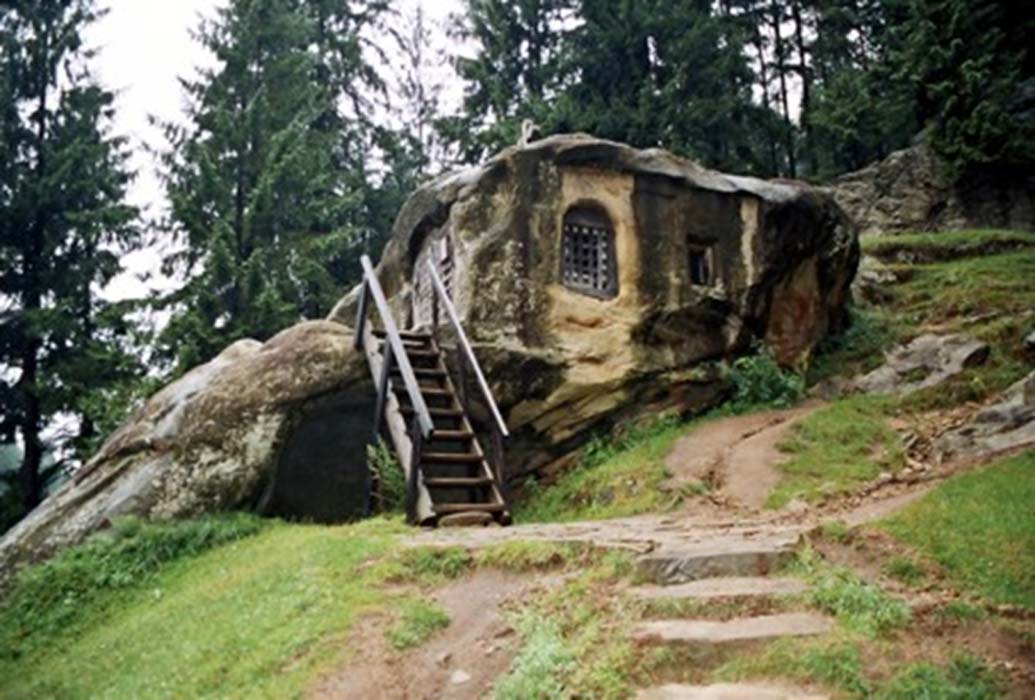15th Century Monk Built This Stone House to Find Solitude
St. Daniel was completely devoted in his quest to contemplate spiritual and religious issues through a life of solitary contemplation. He really did not want to be disturbed in this endeavour and found a novel solution.
St. Daniel the Hesychast (known in Romanian as Daniil Sihastrul) is a saint who is venerated in the Romanian Orthodox Church. This saint lived in the Principality of Moldavia (the territory of which is today divided between Romania, Moldova, and Ukraine) during the 15 th century. This was a period of time when the Ottomans were campaigning against the Principalities of Wallachia and Moldavia. The saint was involved to a certain extent in this conflict, as he was the spiritual guide and counsellor of the Moldavian ruler, St. Stephen the Great. Apart from that, St. Daniel the Hesychast is also associated with the Voroneț Monastery, and the house that he carved out of a rock.
- The Immortal Count of Saint Germaine: Ascended Master of Ancient Wisdom
- Revealing the Recluse: The Sad and Secret Lives of Hermits
- The Pennsylvania Hermit: The Woeful Tale of a Grieving Brother’s Broken-hearted Hermitage

A depiction of St. Daniel the Hesychast. (Image: citydesert)
St Daniel’s Naming
St. Daniel the Hesychast was born in the Principality of Moldavia around the beginning of the 15 th century. At the age of 16, the saint, who had been baptised with the name Dumitru, became a monk at the Monastery of St. Nicholas at Radauti, where he received the name David. Later on, he lived at the Monastery of Saint Laurence in the Civoul de Sus district, where he obtained the Great Schema (the final stage in the religious vocation of an Eastern Orthodox monk / nun), and the name Daniel.
A Spiritual Calling of Solitude
From around 1450, the monk lived for 14 years near the Neamts Monastery by the Secu Creek. When people discovered where the saint was living, they began to visit him. Daniel, however, desired to live in the wilderness in solitude, so as to devote himself to spiritual struggles. Therefore, he moved to Putna, in what is today the northern Romanian region of Bukovina. Here, he carved a house / monastic cell out of rock in the cliff face near Putna Creek, and lived as a hermit. In addition, a small chapel for prayer was also carved out of a rock adjacent to the saint’s new home. Some sources state that the chapel was carved in a high cliff, and the monk’s cell below it.

Entrance to St. Daniel’s cave. (Public Domain)
Here, Daniel was able to practice Hesychasm, which is a type of monastic life in the Eastern Church. Practitioners of Hesychasm choose to live their lives as hermits so as to achieve divine quietness through the contemplation of God in uninterrupted prayer. According to legend, for over 20 years, Daniel spent his life as a hermit in this rock-cut house. The saint’s stone house survives till this day, and has been included on the region’s list of historical monuments. Moreover, many tourists and pilgrims visit this holy site today, seeking enlightenment, as well as answers to their prayers.
- Monks, Hermits and Ascetics: The Little-Known History of Women in Desert Asceticism
- A day in the life of an ancient Russian hermit
- Monk Lives Life of Solitude on This 131-Foot-Tall Rock with a 2,000 Year History

Interior of the hermit’s rock home. (Image: johnsanidopoulos)
A Spiritual and Political Adviser
Yet, Daniel did not spend the rest of his life as a hermit. In 1488, when the saint was over 80 years old, he became the igumen (a title for the head of a monastery in Eastern Christianity) of the newly-constructed Voroneț Monastery. This monastery, often known also as the ‘Sistine Chapel of the East’ thanks to its depiction of the Last Judgment (which was added as a fresco on the exterior of the western wall), was built by St. Stephen the Great, a prince ruler of Moldavia.

The worn stone bed carved in the rock. (Image: johnsanidopoulos)
According to legend, the prince had approached Daniel for advice regarding his battles with the invading Ottomans. The hermit, who was then living near the site of the future Voroneț Monastery, told Stephen to continue the fight. At the same time, however, he should also build monasteries at the sites where great battles had taken place, so as to ensure that the souls of those who had died in battle would be prayed for. In the case of the Voroneț Monastery, this was built to commemorate one of the victories gained by the prince over the Ottomans, and was dedicated to St. George.
Sainthood
Daniel died in 1496, at the age of over 90 years old. He was buried in the Voroneț Monastery, and his final resting place is still visited by pilgrims even today. In 1992, Daniel was declared a saint, along with Stephen the Great, by the Romanian Orthodox Church.
Top image: Saint Daniel’s rock hewn house, Putna. (Public Domain)
By Wu Mingren
References
Condrea, D., 2018. Voronet Monastery or the Sistine Chapel of the East. [Online]
Available at: http://www.uncover-romania.com/attractions/culture/unesco-heritage/voronet-monastery.html
Ilya, 2018. A 15th Century-Old House Carved From Stone By A Romanian Monk. [Online]
Available at: http://unusualplaces.org/a-15th-century-old-house-carved-from-stone-by-a-romanian-monk/
Romania Insights, 2014. Voronet Monastery. [Online]
Available at: http://romania-insights.com/listings/voronet-monastery/
Sanidopoulos, J., 2014. Saint Daniel the Hesychast, Father of the Romanian Hesychasts. [Online]
Available at: http://www.johnsanidopoulos.com/2014/12/saint-daniel-hesychast-father-of.html
The Editors of Encyclopædia Britannica, 2007. Hesychasm. [Online]
Available at: https://www.britannica.com/topic/Hesychasm
The Orthodox Church in America, 2014. Venerable Daniel the Hesychast. [Online]
Available at: https://oca.org/saints/lives/2014/12/18/149006-venerable-daniel-the-hesychast

















